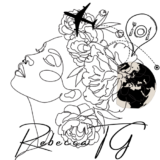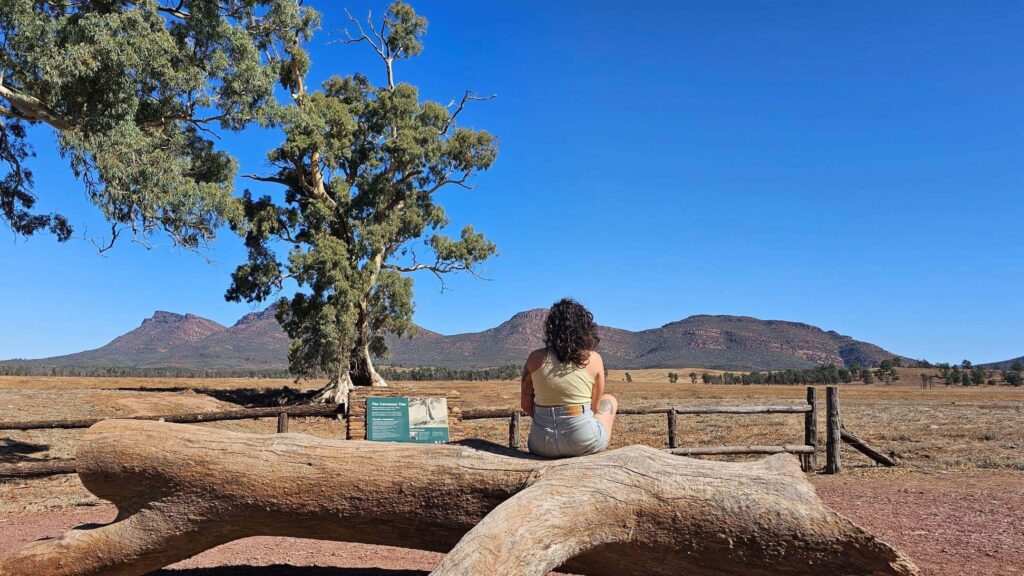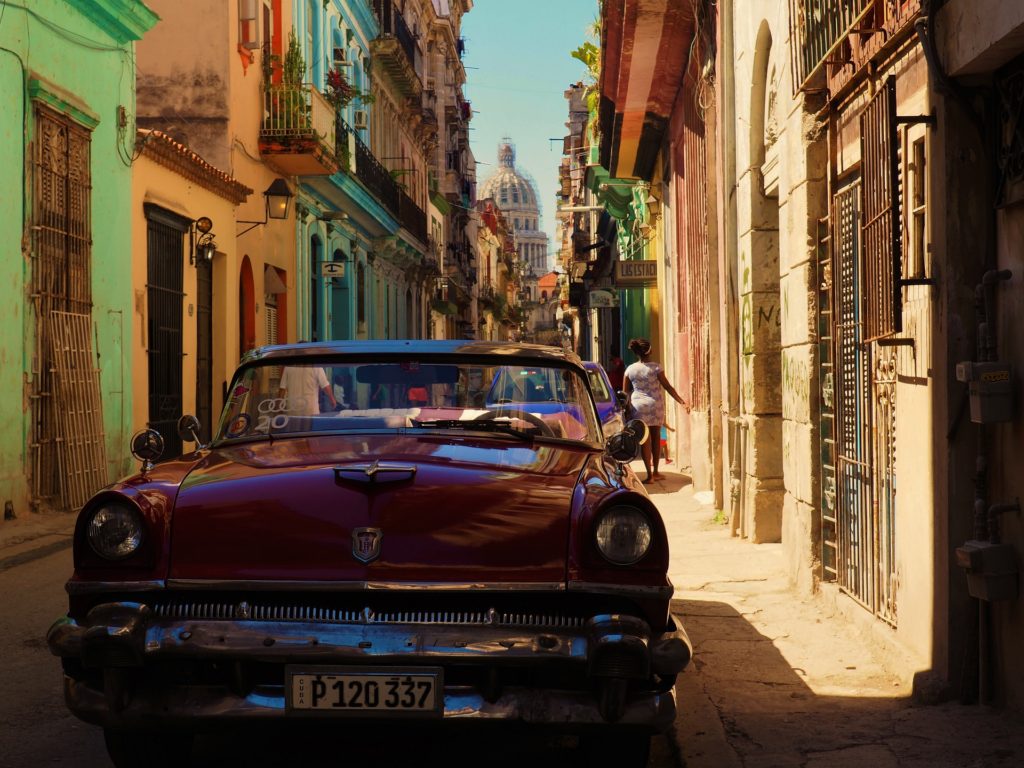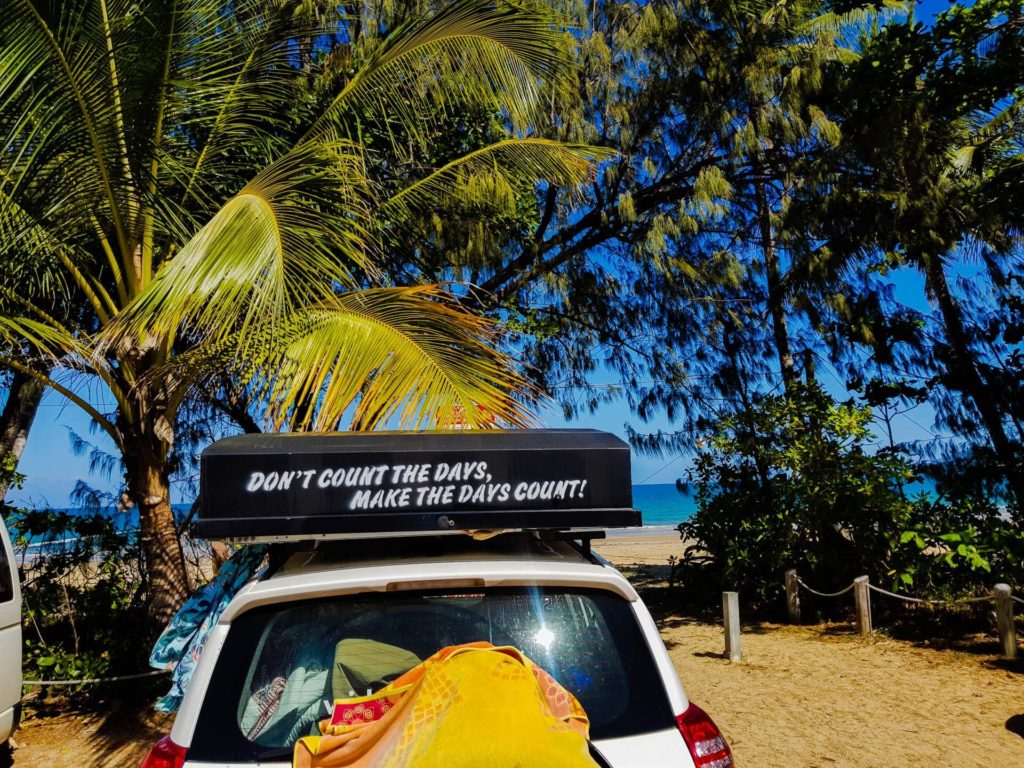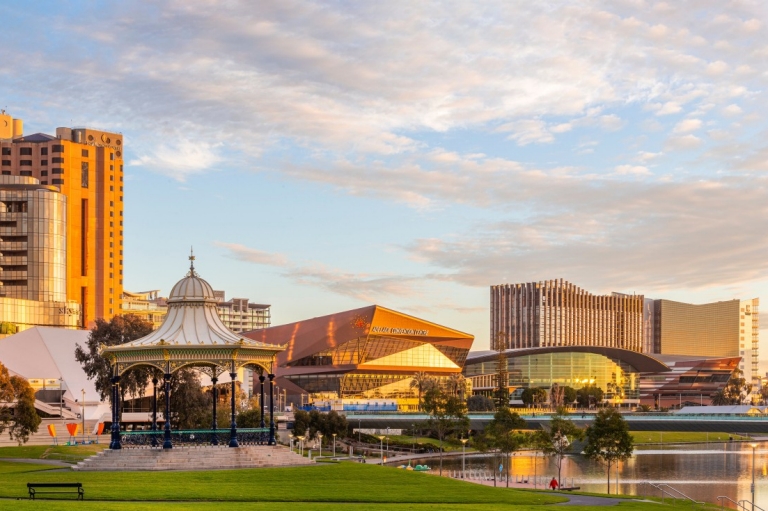While I am a waterfalls and bays chaser, I must admit a few other nature landscapes take my breath away. And, yes, Ikara-Flinders Ranges National Park is one of these.
I was invited to spend an Easter holiday here with friends, camping and chilling, so I didn’t have any expectations, as I wasn’t aware of the Flinders Ranges National Park. But let me tell you, the closer I got to Ikara National Park, the more I saw the beautiful ragged mountains my friends were just telling me about, and my eyes started to absorb all the beauty around me.
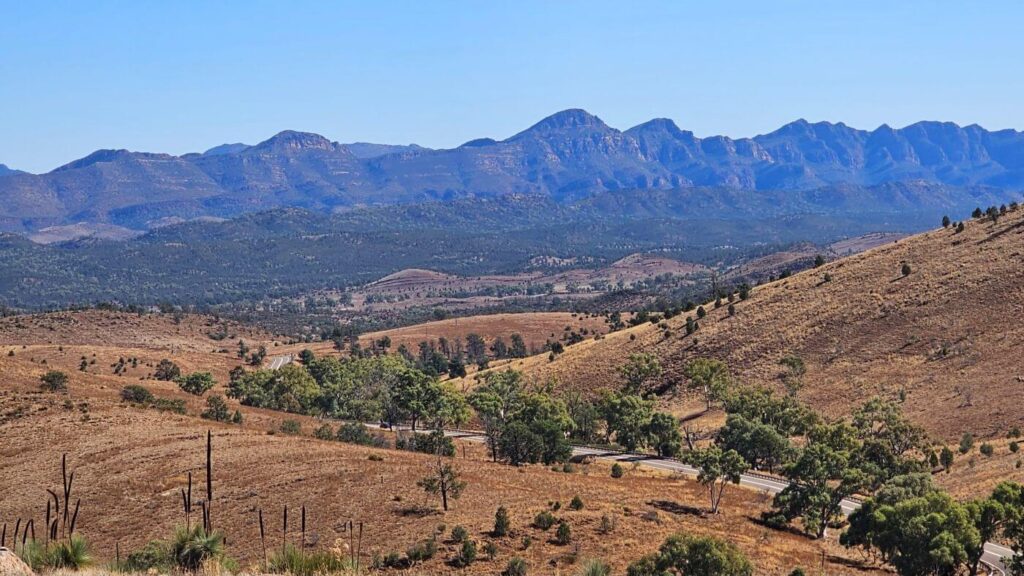
Ikara-Flinders Ranges National Park then became another wonderful place I have seen in Australia, one of the places I needed to share with you, to tell you all about and let you feel what I felt when I was there. The ultimate guide to the Flinders Ranges National Park is for you to understand what to expect when you visit this place: ancient landscapes, rich cultural heritage, native wildlife, starry skies, and many adventures and activities to do.
After visiting Flinders Ranges National Park twice, I can promise you won’t regret extending your road trip here, hitting the many hiking trails, catching the sunsets and doing plenty of things. This perfect guide to the Ikara-Flinders Ranges National Park will answer all your questions and help you plan the trip in the best way to enjoy every little of this wonderful part of South Australia.
Wait until the end to read the perfect 4-day itinerary in the Flinders Ranges National Park
- a little about Ikara-Flinders Ranges National Park
- Who am I?
- How to get there
- When to visit the Ikara-Flinders Ranges National Park
- Where to stay
- Things to do in Flinders Ranges National Park
- 4-day Ikara-Flinders Ranges National Park itinerary
- Essential things to know and pack before heading to Ikara-Flinders Ranges National Park
a little about Ikara-Flinders Ranges National Park
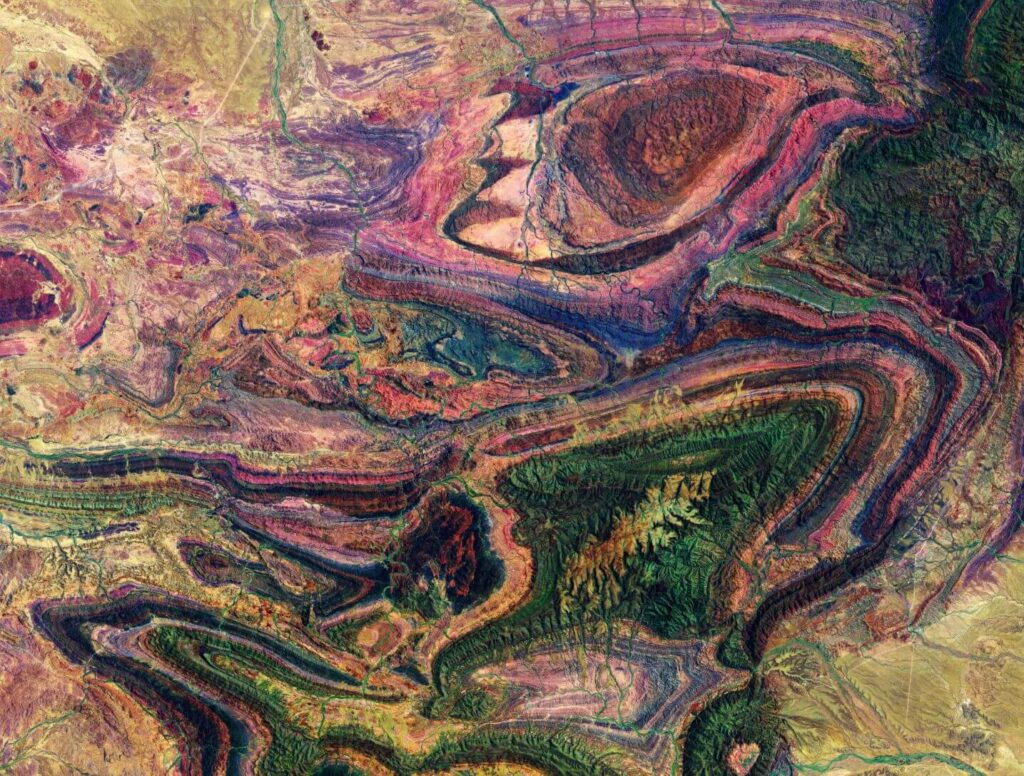
The Flinders Ranges, starting about 200km north of Adelaide, is the largest mountain range in South Australia, they stretch for over 430km from Port Pirie to Lake Callabonna. The National Park covers up to 95 000 hectares of the Central Flinders Ranges region and it’s one of the oldest landscapes in the entire country.
The Adnyamathana and Ndajurri people were the first humans to inhabit the Flinders Ranges before the European colonisation. Cave paintings, cultural artefacts, and rock engravings witness the Adnyamanthana and Ndajurri people as the traditional owners for tens of thousands of years.
Who am I?
Hi! I’m Rebecca a travel, food and nature lover. I lived and worked in 5 different countries and travel around many more. I tell my stories and share itineraries, guides, recipes and much more.. Come read more about me to understand why I do this!
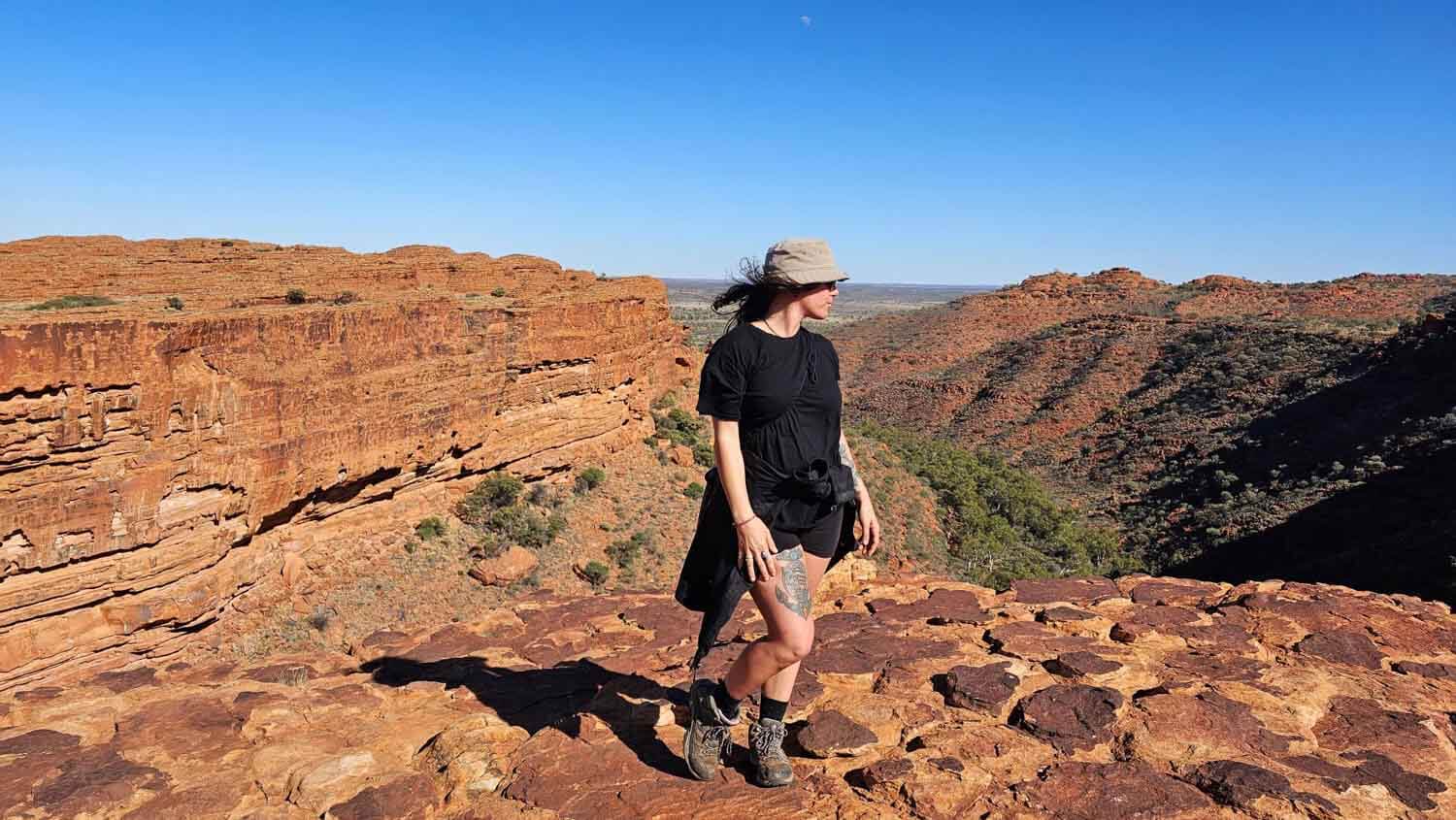
The Ikara-Flinders Ranges National Park is co-managed by the SA Government and Adnyamathanha Traditional Owners. It seems to be one of South Australia’s top destinations for hikers, geologists, photographers, and people who enjoy four-wheel drive and who are looking for a relaxing and quiet camping experience. I would say is a place for anyone who enjoys nature and all that comes with it.
How to get there
The Ikara-Flinders Ranges National Park is easily accessible from Adelaide. Is situated approximately 450 kilometres north of Adelaide.
The mountain ranges of the Fliders begin stretching north from Port Augusta, however, the official national park boundary begins just after the Rawnsley Park Station way.
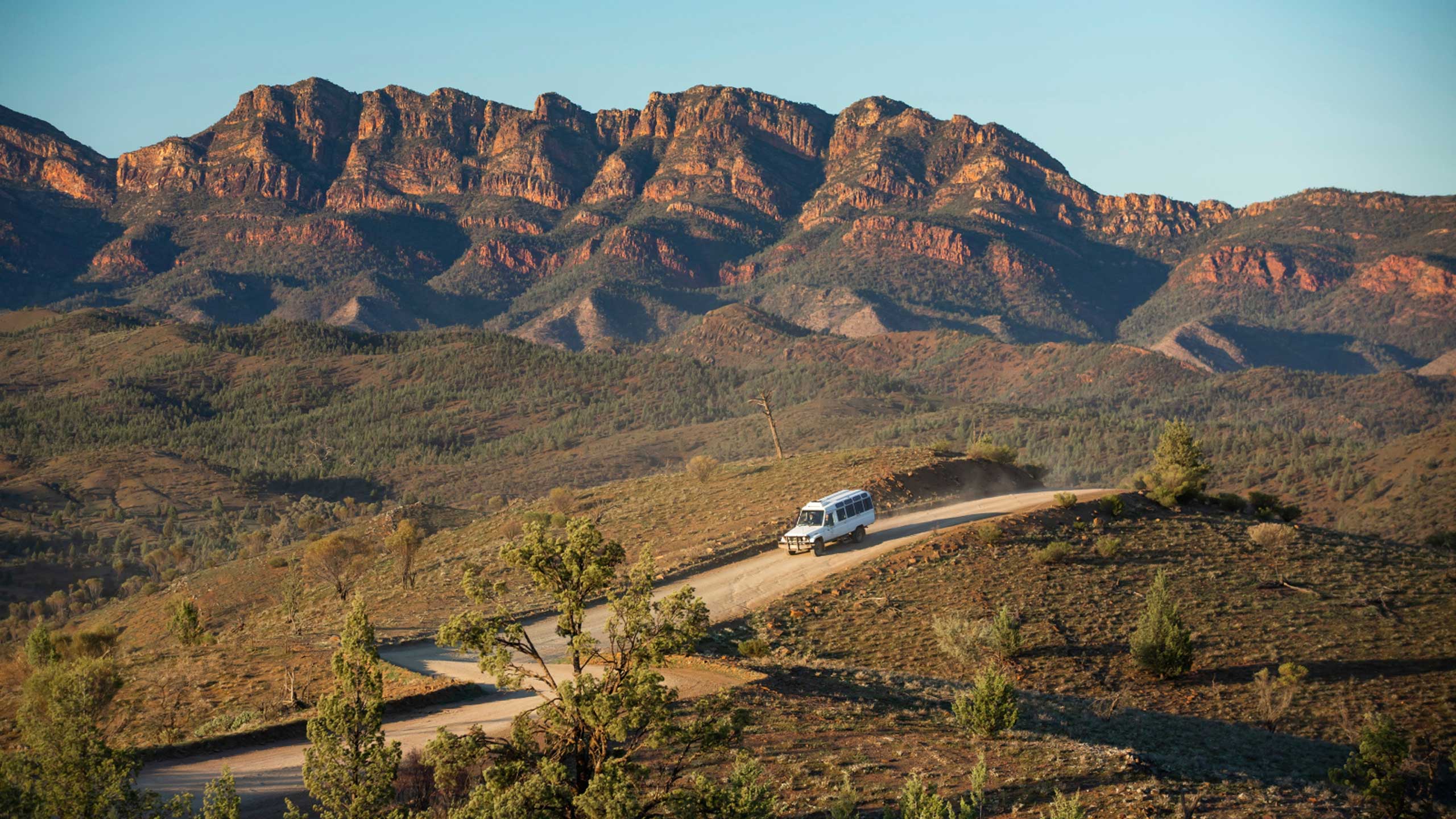
Adelaide to Wilpena Pound (the central hub of the park): 458 km or 5 hours and 5 minutes drive
Coober Pedy to Wilpena Pound: 700 km or 7 hours and 15 minutes drive.
If you are driving from the north of the country or planning a trip through the red centre, here is what you need: “The complete itinerary on the Explorer way, from Adelaide to Darwin” and vice versa. Find inspiration or simply follow my 21-day or 7-day itinerary.
When to visit the Ikara-Flinders Ranges National Park
As in most of the Australian Outback, you don’t want to be there during the summer months, the temperature in this period is hectic. During the summer months, the maximum temperatures range from 30ºC to 45ºC. Nonetheless, winters are dry, mild, and have cooler temperatures.
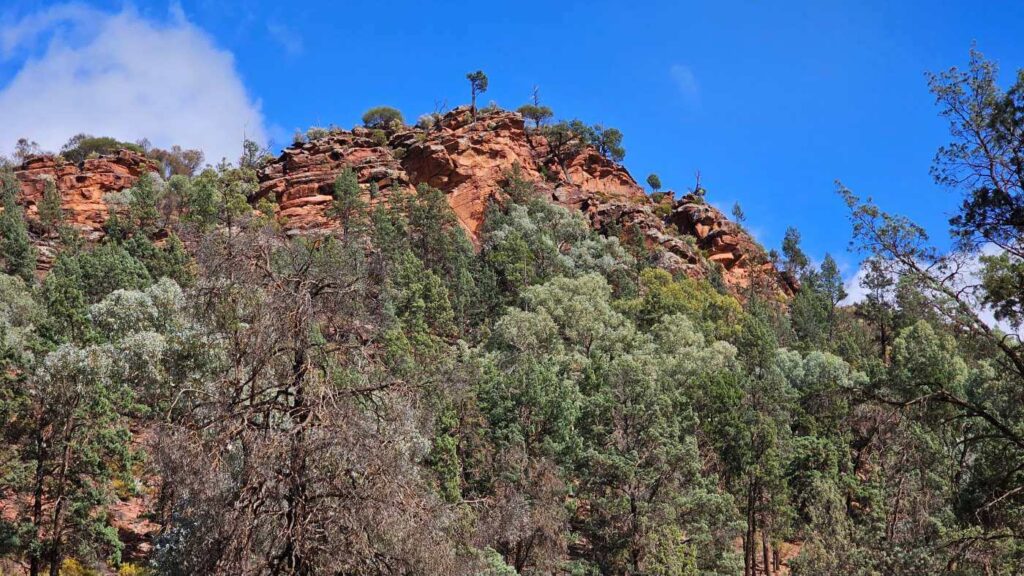
The best time to visit Flinders Ranges will be from April to September. While June to August is the most popular time to visit, late autumn and early spring are also good times to visit Flinders Ranges National Park, the days can still be clear, and warm and the nights cool. If your main reason for visiting the Flinders Ranges is hiking, prefer to be there during winter (or close) to enjoy bushwalking the most. Consider a heavy temperature change at night, they can get below zero degrees, so be ready for all these conditions.
Where to stay
To stay within the Ikara-Flinders Ranges National Park you have two options: Wilpena Pound Resort and campground or SA park campgrounds.
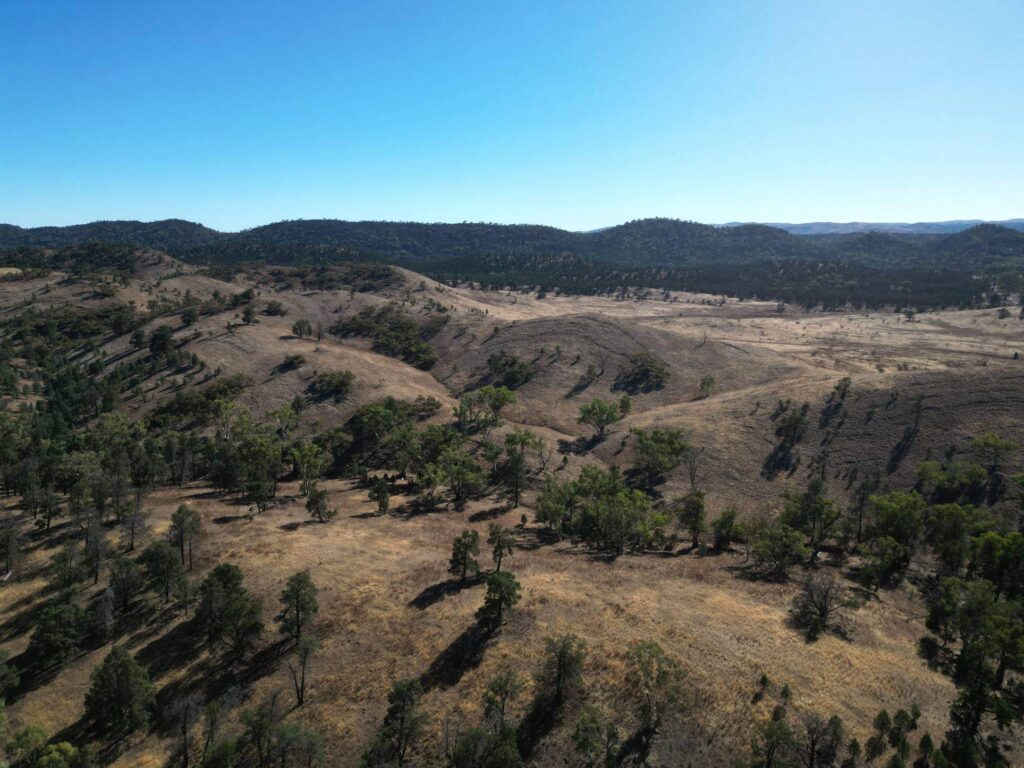
Wilpena Pound is situated at the heart of the National Park, here you have all the amenities and services you might need for your stay: visitors information centre, fuel, supermarket, cafè, restaurant and bar, dump point, car wash, swimming pool, laundry, toilets, shower and free Wi-Fi. They offer Hotel rooms (prices starting from $200 per night), a Glamping experience (prices starting from around $310 per night) and a large bush camping, offering over 300 sites between powered and unpowered sites, with plenty of facilities, but no camp kitchen (prices vary depending on the season, but start at $15 for unpowered). If you plan to go during peak season, make sure you book in advance here.
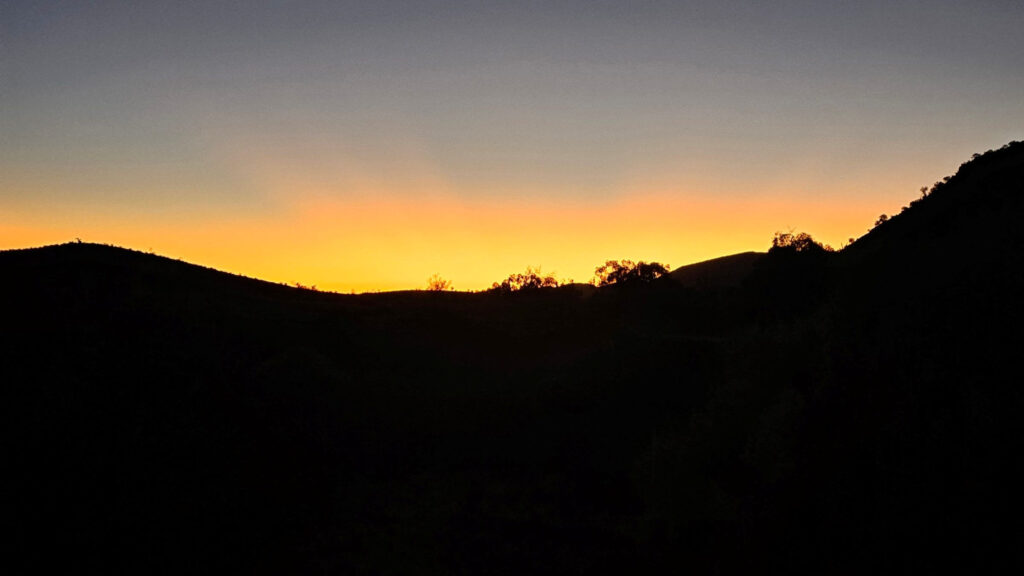
SA Park Campgrounds offers around 10 bush campgrounds all reachable with a car and one for hikers only. These Flinders Ranges National Park campgrounds offer basic toilets, some have firepits, very few BBQs and lots of wilderness around you. They are much less crowded and the prices start from $25.80 per night. Here you can check the options from SA Park.
Outside the Ikara National Park, you can opt to stay at some of the private stations and working farms. Some are: Holowiliena Station, Rawnsley Park Station and Praire Hotel.
Things to do in Flinders Ranges National Park
Ikara-Flinders Ranges National Park is South Australia’s premier hiking destination, but there are countless things to do in this park. You can easily stay weeks in the National Park and never get bored because this area has a lot to give. Here are some of the things to do and get the perfect guide in this area.
Bushwalking
Definitely, the number one thing to do in this area is hiking. You cannot go to Flinders Ranges and leave without having done a trail. Don’t worry there is a large variety of hiking trails: from short and easy as 1km, as the “Living with Land Walk”, to 1200km long-distance walking trail, the “Heysen Trail” that starts from Parachilna Gorge and ends at Cape Jervis (Fleurier Peninsula).
Make sure you always take enough water, sunscreen and a hat when bushwalking, as the temperature during the day can be harsh.
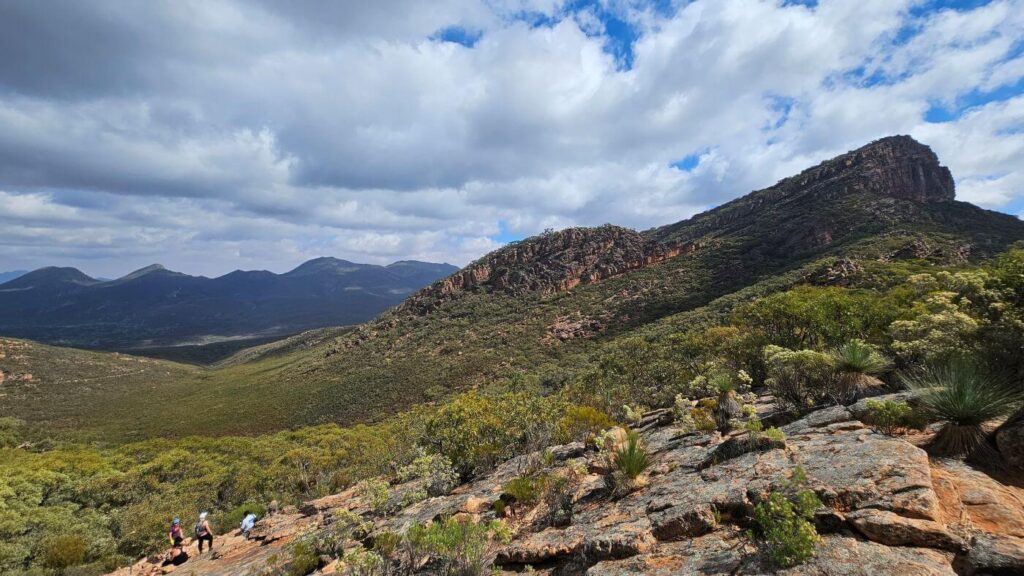
Most of the tracks start from Wilpena Pound Resorts, so if the main focus of the visit to the park is hiking maybe your best staying option is Wilpena Pound. Some of the best trails to follow are: Trezona Hike (4 hrs return, 8km) where you can spot geological formations. Arkaroo Rock Hike (2 hrs return, 3km) to see rock painting, St Mary Peak Hike – Ngarri Mudlanha (Direct route: 6 hrs return, 14.6km. Loop route: 9 hrs, 21.5km) is the central to the Adnyamathanha creation story and Hidden Gorge (4.5 hours, 17.3km circuit, opt for a clockwise trail) is a worthy option for those who are looking for a long but beautiful day walk.
Mountain biking
If you enjoy mountain Biking then the Mawson Trail is the equivalent of the Heysen Trail on two wheels and stretches 900 km. Ikara-Flinders Ranges National Park has fantastic Mountain bike opportunities to offer, and you can rent your bike at the resort so you don’t have to bring your own.
Scenic driving
With many incredible scenic drives to encounter within the park and around, consider doing the two most famous: Brachina Gorge Road and Bunyeroo Road. Both the drives are on unsealed roads so a 4WD is recommended, but check the recent conditions before setting out.

Brachina Gorge Road is a 20km self-guided trail that passes through 130 million years of earth history. Here you can see the fascinating geological formations through past climates and evolution.
Bunyeroo Road crosses Bunyeroo-Brachina-Aroona and combines the best this park has to offer. Scenery, wildlife, geological formations and European heritage. It is a less crowded drive and still really worthwhile.
Take a flight over Ikara-Flinders Ranges National Park
If you like a full view of the Ikara-Flinders Ranges National Park you don’t want to miss a scenic flight experience over the rugged mountain ranges. There are two companies to offer this, Wrights Air operates out of Wilpena Pound Resort and Chinta Air operates from Rawnsley Park Station. Prices start from $200 for 20 minutes flight.
Enjoy the native wildlife and nature
Perhaps you are escaping the crowded city where your connection with nature got weaker, Flinders Ranges National Park is the place to be if you want to reconnect with nature. Wildlife here is numerous. Native plants and animals can be found everywhere, during most of the day.
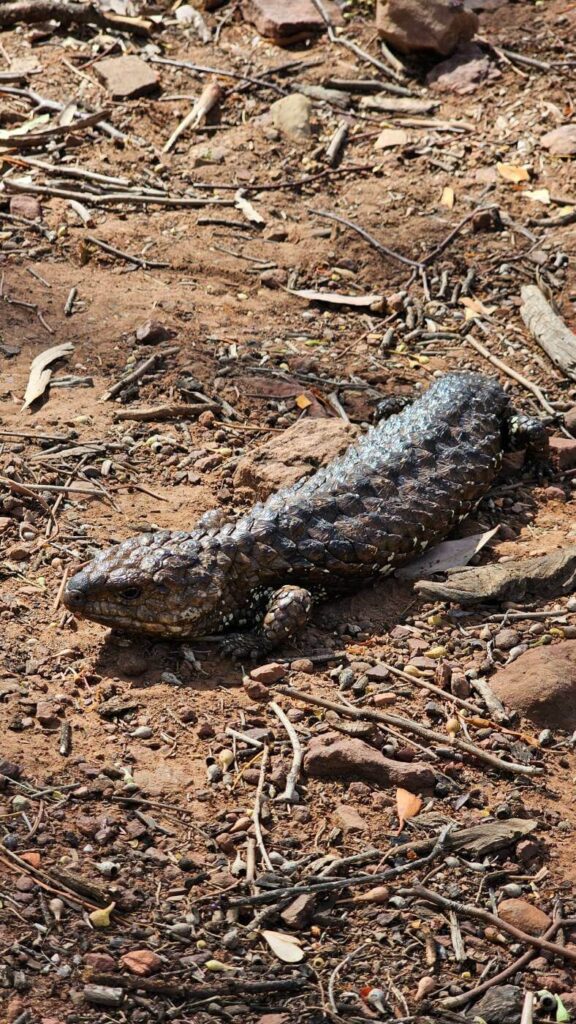
Spot grey-fronted honeyeaters, wedge-tailed eagles, rainbow bee-eaters and other species of birds. Yellow-footed wallabies in the early morning and in the late afternoon, high are the chance to spot short-beaked echidna, emus, shingleback (also called Double-headed Lizard) and other species of reptiles and mammals. If you are into wildlife, bird watching and observing nature, read this article.
An abundance of plants is also found throughout the park, including many rare species. During spring you can assist the carnival of colour, with wildflowers carpeting the plains and foothills.
Visit the sites of interest
Learn about the Adnyamathanha people
To learn about the Traditional Owners and their culture and their dreamtime story about the pound, make sure not to miss the daily Welcome to Country talk on the front lawn of the resort.
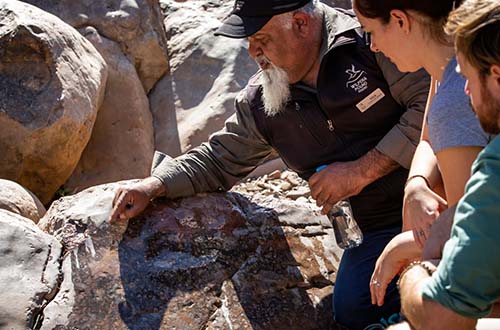
Ikara: discover the natural rock formation of Ikara (Wilpena Pound). Ikara is a remnant floor valley from an ancient range of mountains that have been eroding away over millions of years. Ikara covers an area of about 100km. The Adnyamathanha people translate the word Wilpena as Ikara meaning ‘meeting place’.
Akurra Adnya (Arkaroo Rock): is a significant Adnyamathanha painting site and an important cultural site for the people of the Flinders Ranges. The 3 km round loop trail leads to a rock shelter containing the ancient drawings. Wilpena Pound Resort offers a guided tour of this trail, so you can learn more about the Adnyamathanha people and what this means to them.
Yura Mulka: the Sacred Canyon. With restricted access from 2020, this Canyon is the heart of Ikara-Flinders Ranges National Park for the Adnyamathanha people. With a Yura guide, you can walk 3 4-hour to see and learn about the culturally significant rock art site of the Sacred Canyon. See Wilpena Pound Resort for booking.
Admire the geology
Brachina Gorge is one of the most popular tourist attractions. The gorge is home to many yellow-footed rock-wallaby and other wildlife. Drive the Brachina Gorge Geological Trail to learn about the area’s geological history.
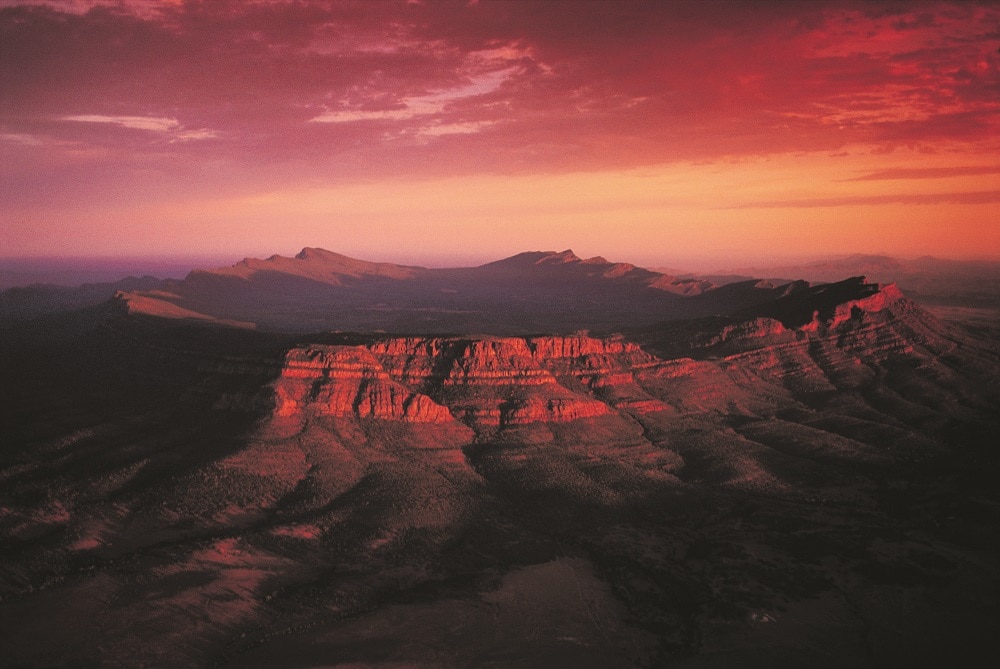
Bunyeroo Valley is a peaceful gum-lined gorge framed by rugged rock formations. The information boards to find during the hike will teach you more about the rock formations that you’re looking at.
Read about the history of the early settlers
If you are more into history, Flinders Ranges National Park got you covered. Take a look into the early settlers of the area: Old Wilpena Station an important pastoral settlement site built in 1851, Blinman the historic township and Aroona Ruins are some of the sites to see.

4-day Ikara-Flinders Ranges National Park itinerary
To be the perfect guide to the Ikara-Flinders Ranges National Park, it can’t lack a short but complete 4-day itinerary. This itinerary is quick but includes some of the best and most important parts of the National Park.
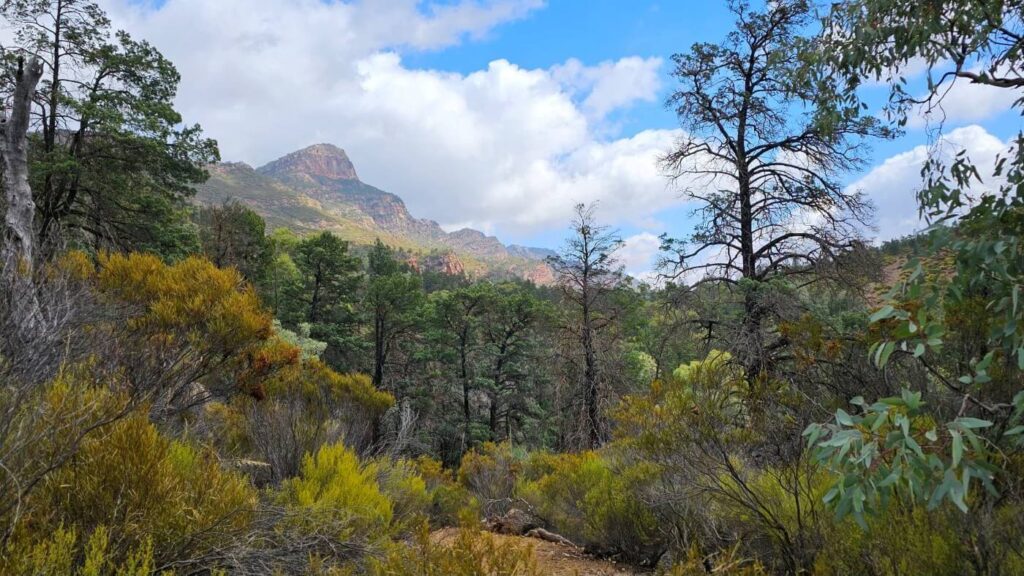
Day 1: Depart from Adelaide early to be able to reach Flinders Ranges before lunchtime. Check in at the resort campground (or your chosen option), relax and have a look around Wilpena Pound. Make sure you don’t miss the Daily Welcome at 4.30 to learn about the Adnyamathanha people. If you have some energy left walk the 3km moderate trail of Arkaroo Rock, starting south of the resort, and you can spot your first incredible sunset of this vast area.
Day 2: After your quiet night, be ready to start your day with one of the nicest hikes. Starting from the Resort you can head to St. Mary’s Peak hike, the highest peak of the Ikara-Flindes Ranges. Choose between the direct route (6 hours return and 14.6km) or the loop route (9 hours and 21.5km). Once on the peak, you will be rewarded with a 360° view of the ranges. Take water, snacks, a hat and sunscreen. Spend your afternoon chilling at the campground or go for a scenic drive along Bunyeroo Road and Brachina Gorge Road. On your way back stop at Stokes Hill Lookout for the sunset.
Day 3: Start your day slowly and head off on the Mt Ohlssen Bagge hike, do not take it too easy as the trail is steep and tough (6.8km return in 2 hours). Relax for lunch and go to see some of the best lookouts: Hucks Lookout, Wangara Lookout or Bunyeroo Valley Lookout.
Day 4: Leave Wilpena Pound Resort to reach Cazneaux Tree and enjoy the views of this iconic tree. On the way, stop for lunch at Flinders Food Co. before hitting the road.
Essential things to know and pack before heading to Ikara-Flinders Ranges National Park
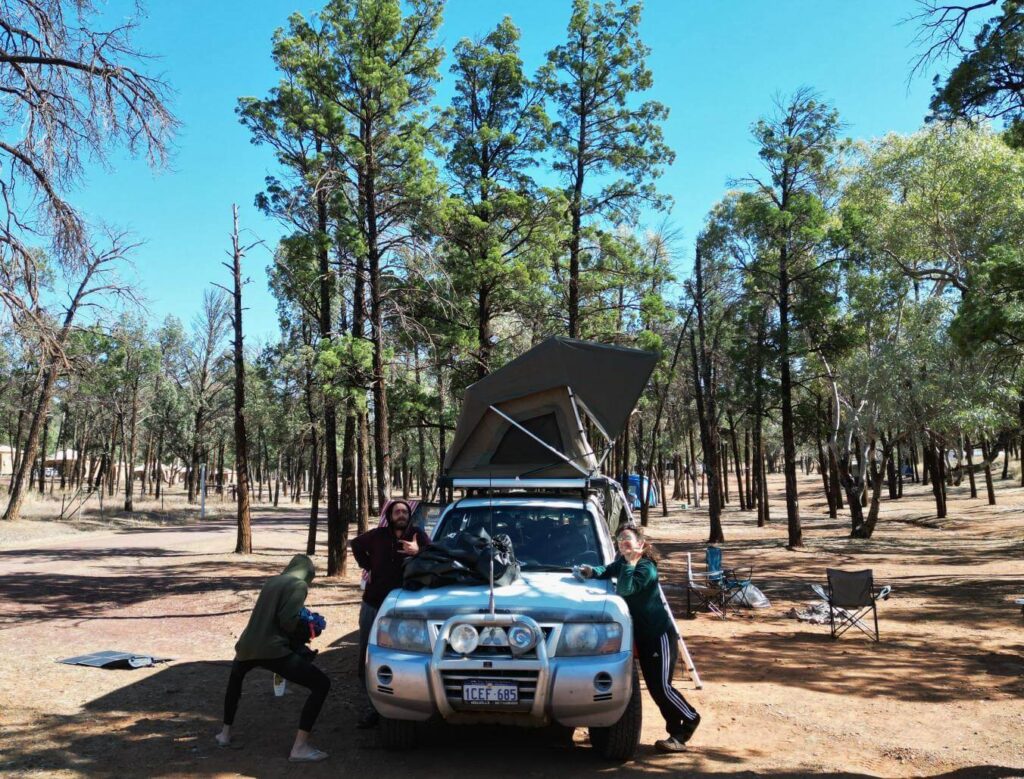
- Camping gear: make sure you pack all the essential camping gear, you don’t want to leave your chair or your warm sleeping bag. The temperature at night drops down, so expect cooler nights.
- Summer months are hot and inhospitable, so don’t try planning your trip to Flinders Ranges between September and March. Also consider most of the hiking trails are closed and local cafes and restaurants might be too.
- Make sure you plan ahead and be aware of the vast distances between locations in the Flinders Ranges region
- Water and snacks: don’t be afraid to overload your car with snacks (dry and fresh fruits, nuts and others). If the main reason for your visit here is for the hikes you need to be prepared and always carry with you at least 1 litre of water and a few snacks to have during your walk in case you need them.
- Sunscreen and a hat: same for the snacks and water these two are a must-have in the region, the sun is strong and you don’t want to risk your skin or a sunstroke. If the hike is longer than a few hours perhaps take sun protection with you or decide to wear a UPF shirt (sun protection shirt).
- Road conditions change frequently, so always check at the visitor centre before setting out on the scenic drives mentioned in the post. Prefer coming to Flinders Ranges with a 4WD high-clearance vehicle. Some lucky people could explore most of it with a 2WD car.
- Cell phone reception is rare to non-existent in most of the region. Telstra work better but does not a warranty. Wilpena Pound resort offers free Wi-Fi in case you need it!
Where are you going next?
Going south to Adelaide - 5 day itinerary in Adelaide and top 10 do in Adelaide
Going North - The Red Centre itinerary - Adelaide to Darwin
Going North-East - Airlie Beach to Cape Tribulation
